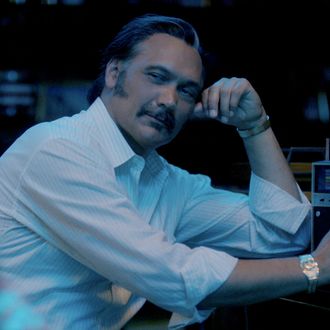
A story about the Bronx, a pop-culture pastiche, a lesson on hip-hop history — Baz Luhrmann’s big, expensive Netflix series The Get Down is about 15 things at once, tied together with a crane shots and music cues. The show takes place in 1977, when New York was nearly bankrupt and in the midst of a pivotal mayoral race, and with The Get Down’s many plot threads, it’s pretty easy to lose track of its political setting — especially when it introduces those details through rhyme. So to better understand what exactly is going on in Papa Fuerte’s offices, we dug up a little background on a fraught year in New York.
The debt
In 1975, the banks and bondholders that the city relied on to fund its programs decided to come calling for their checks. To pay them, Mayor Abraham Beame asked the federal government to help bail out the city’s debts. President Gerald R. Ford refused, prompting the infamous New York Daily News headline: “Ford to City: Drop Dead.” The city skirted full-on bankruptcy, and eventually did receive some help from the federal government, but only after massive spending cuts. Funding for programs across New York dried up and government workers were cut from their jobs. The Get Down imagines more than a little corruption flowing in the backrooms where deals were cut, such as Francisco “Papa Fuerte” Cruz (Jimmy Smits), a councilman from the Bronx, initially promising to deliver votes for Beame in the election in exchange for funding Cruz’s building projects in the borough.
The crime
The budget cuts did nothing to help New York City’s crime problem, which had come to define the city for many, especially tourists. The subway, a repeated motif in The Get Down, was considered especially dangerous, and the Bronx itself was pockmarked by abandoned buildings — photos of President Carter visiting the blighted borough in 1977 famously shocked readers of the New York Times. The July 1977 blackout and accompanying looting, depicted in The Get Down, solidified the image of New York as a den of crime and became a turning point in city politics heading into the mayoral race — though it wasn’t until the 1990s that crime rates started to fall significantly.
The mayoral race
Ed Koch, who campaigned on a platform of law and order, handily defeated Beame in the Democratic primary in September 1977, and then ran against Mario Cuomo, who reentered on the Liberal Party’s ticket in the fall. Koch was a Jewish Greenwich Village representative, and over the course of his tenure as mayor from 1978 to 1989, “Citizen Koch” became a New York emblem. Koch was also plagued by accusations that he was secretly gay, which came up in “Vote for Cuomo, not the homo” placards in the 1977 elections and intensified during the early 1980s AIDS crisis. From the perspective of his supporters, Koch was the face of the New York cleanup, but his politics alienated many, including black New Yorkers, as New York Magazine noted at the time. So from the perspective of many characters on The Get Down, Koch’s calls for law and order were infringing on a way of life.





